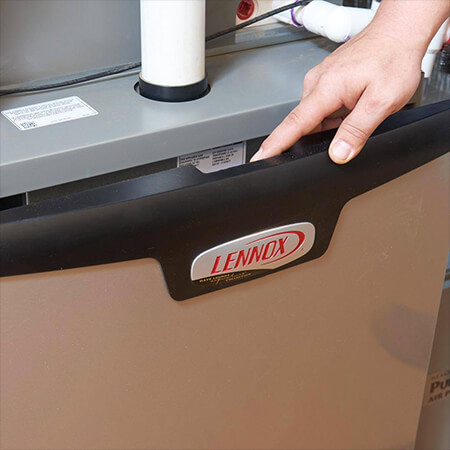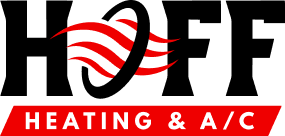Learn More About Your Furnace

If you own a house or an apartment, you need to understand how your furnace works. There are many benefits to knowing a little bit about your furnace, including having a better understanding of when something might be wrong and what might need to be fixed. You’ll also be able to get a better sense of who you should trust to work on your heating system and what you can expect when it’s time to buy a new unit. There are many parts to a furnace and the overall system that your furnace runs on. If you’re not entirely certain of what you should expect when you get a furnace or what you need to know, don’t worry because you’re not alone. Most people simply turn on their thermostats when their homes begin to get a little chilly, but you can learn pretty quickly about your heating system when you talk to us about your furnace.
The Three Types of Furnaces
There are three basic types of furnaces when it comes to how they’re powered. Some use natural gasoline that you pay for through the city or another energy provider. Then, there’s also a way to fuel your furnace with propane, which you’ll usually have to have filled by an outside company, or you’ll have to do it yourself. Then, there are furnaces that run on electricity. There are two ways that furnaces that run off of propane or gas can be lit, and electricity has its own way that it heats the coils.
Common Parts of Furnaces
There are a few common parts that all furnaces need to heat your house. For instance, you absolutely need a thermostat, but you also need a heat exchanger, ductwork, a flue, and registers. There are countless types of thermostats, and the exact methods that they use to detect the temperature in your home can vary depending on how old the thermostat is. The heat exchanger will always be metal because this material is the best at conducting and holding heat so that it can be evenly released to the blower. Additionally, all properties will have some kind of register, but the location of them can vary depending on the age of the house and whether they’re in a basement or an upper floor. The way that the ductwork is laid out can also determine whether the register is on the ceiling, upper wall, lower wall, or floor.
The Role of the Thermostat
When you set your thermostat, it’s going to turn on the furnace when it senses that the temperature has fallen below a certain degree. There are a few types of thermostats, including the metallic strip thermostat. When the metallic strip cools down, it will contract, sending signals to the furnace that it’s time to start sending out heat. The thermostat will also play a role in telling the heater to turn off when it senses that the room is warm enough.
The Role of the Pilot or Other Heating Device
There are a few types of devices that are used in furnaces to create heat, and a classic pilot light is still very common but slowly becoming less so because it’s being replaced by safer alternatives. If you have an older furnace, though, you might be familiar with the blue flame that you notice when the pilot is lit. Usually, the pilot will be lit for the entire season so that the unit can simply turn on when it needs to. Most people turn off the pilot when warmer weather hits both as an added safety precaution and as a way of conserving gas or propane and prolonging the life of their furnace.
Another one of the most common types of heating devices is something that’s similar to a cigarette lighter, which is more often used today than it was even a couple of decades ago. This device will light up when the furnace is told to turn on, and it uses either propane or natural gas to fuel the burn.
The third common type of heat source is an electrical coil system. The coils heat up when the thermostat sends the signal. Then, the blower pushes the heated air through the ductwork and registers and into the room.
What the Heat Exchanger Does
The heat exchanger is a collection of metal tubes and shells that heat up from the pilot or other heating device to help warm the air. They’re able to do this because of metal’s ability to store heat. On efficient furnaces today, there’s both a primary heat exchanger and a secondary heat exchanger. The primary heat exchanger is responsible for providing about 70% to 80% of heat efficiency. The secondary heat exchanger is able to pick up another 10% to 20% of the heat so that most furnaces with both a primary and secondary heat exchanger are about 90% efficient. Heat exchangers tend to be the largest part of the furnace, but they’re also prone to wearing out because they’re constantly under stress from the heating and cooling process. This can leave the heat exchanger parts cracked, which can make the heater less safe.
What the Blower Does
After the air around the heat exchanger has been warmed, the blower moves the air toward the ductwork, where it’s more fully distributed through the house. The constant blowing of the air will continue to force all the heated air until it reaches the registers, where it will leave the ductwork and enter the rooms of your house. The blower also makes the process of the heat getting to the ductwork and into the room before it cools more efficient. This is also why most furnace systems are called forced-air systems.
What Does the Flue Do?
When you light a furnace and use propane or gas, there will be a certain amount of byproducts that the combustion of the gas or propane makes. These byproducts are usually harmful and include carbon monoxide. The flue is there to remove these byproducts so that you can enjoy a warm home without getting sick. Once the byproducts reach the flue, they’re sent out of the house through an exhaust pipe.
If you have a furnace, you need to have some basic knowledge of how it works so that you can get the best possible care for your unit and know when it’s time to replace it. But you’re not expected to know everything about your heating system. That’s why there are experts. When you come and talk to us at Hoff Heating & AC, you’ll be working with experienced technicians who understand how to talk to you and give you advice on what to do next with your furnace. You’ll also be talking to someone who’s able to repair, replace, or maintain your furnace and air conditioning system. If you’re ready to talk to the professionals in the O’Fallon, MO, area, simply give us a call today.

 Call Us Today
Call Us Today
